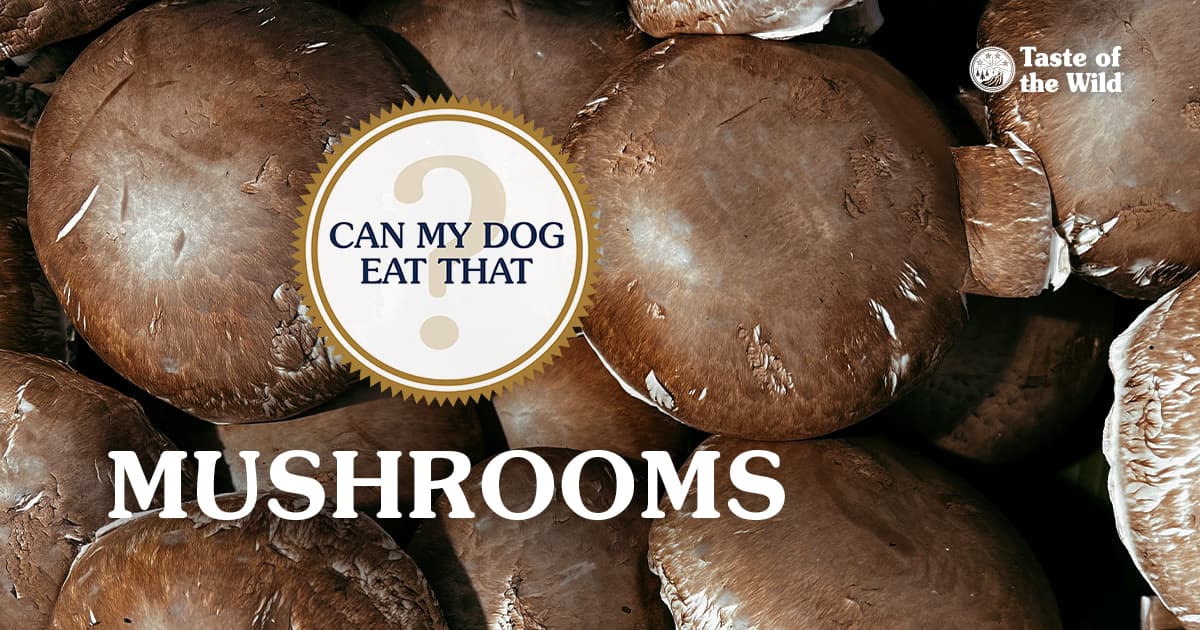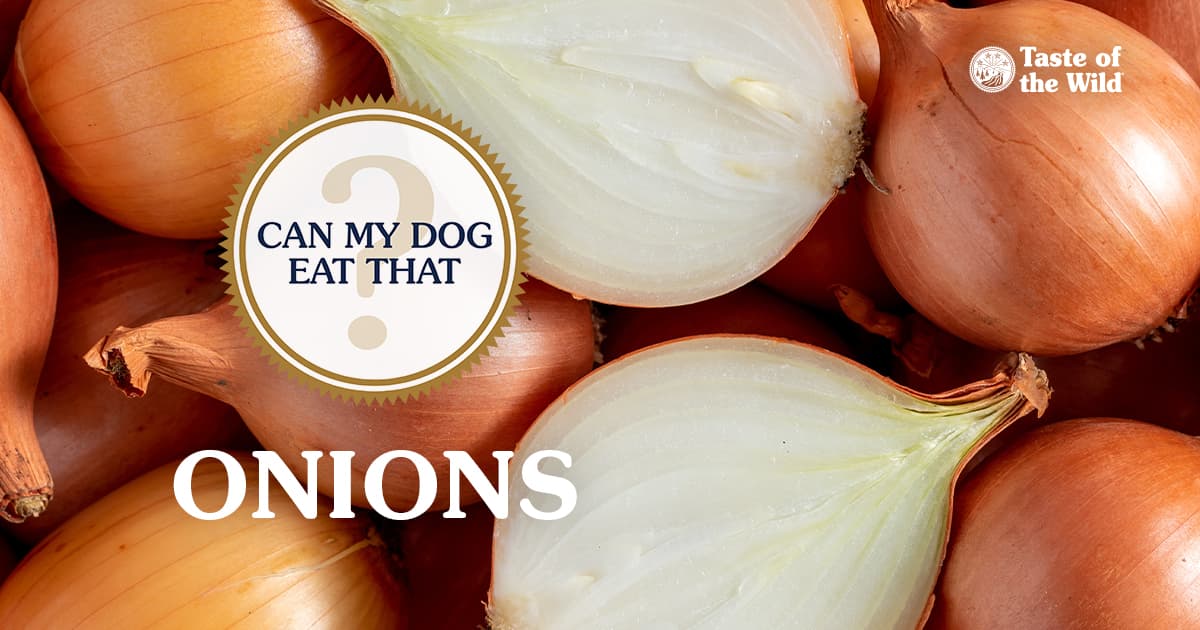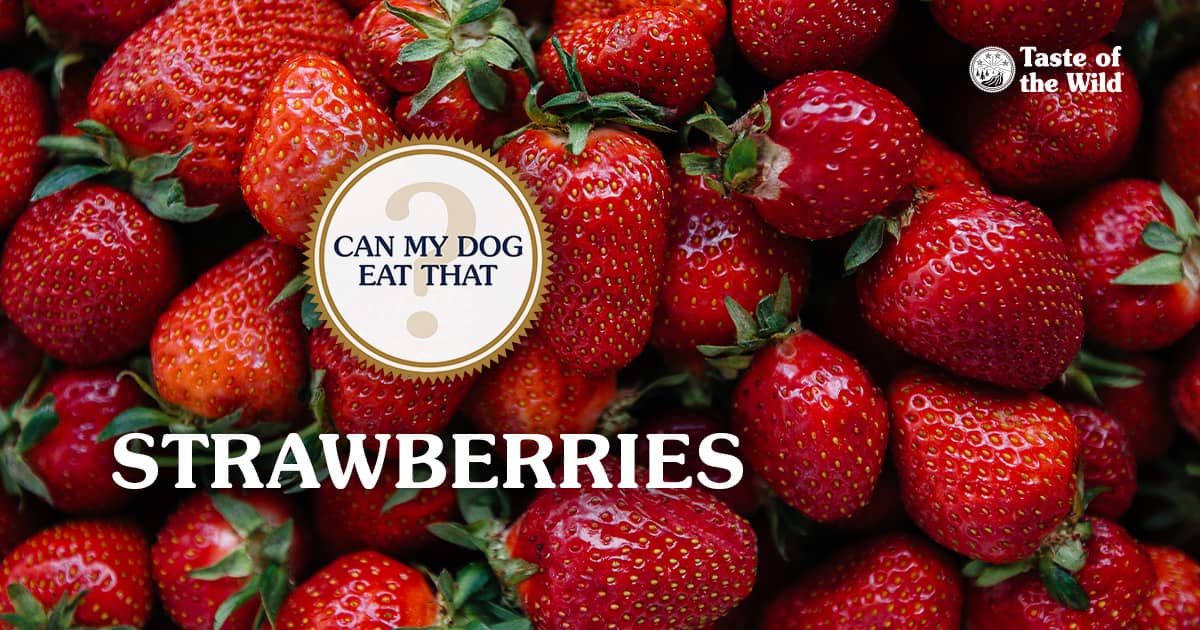Can My Dog Eat That? Mushrooms
Category: Can My Dog Eat That

Welcome to “Can My Dog Eat That?,” our series that answers some obvious (and not-so-obvious) questions about what your dog can and can’t safely eat. You can view some of the previous foods we’ve looked at in our “Can my dog eat that?” guide. Today we answer the question “Can dogs eat mushrooms?” Read on!
One of the best things about hiking with your dog is that they’re not just exercising their body: all the new sights and smells mean they get to exercise their brain, too. However, sometimes that curious nose can get dogs into trouble — like when they come across mushrooms growing in the wild. Let’s go over why mushroom poisoning is a serious risk when dogs eat wild mushrooms, and whether store-bought mushrooms are safe for dogs to eat.
Are Mushrooms Bad for Dogs?
Whether you can feed mushrooms to your dog depends on the mushroom. Store-bought mushrooms are generally safe for dogs. Wild mushrooms are the ones your dog should always avoid due to the risk of mushroom poisoning, which can be fatal. Not all of them are dangerous, but because toxic wild mushrooms can be hard to identify, it’s best not to let your dog eat any mushrooms that grow in your backyard or anywhere else.
Are Wild Mushrooms Poisonous to Dogs?
Although many wild mushrooms aren’t toxic, some common species can be incredibly poisonous and even deadly if eaten by dogs. For example, as little as half of a fresh “death cap” mushroom (Amanita phalloides) can be fatal to an adult dog. To be safe, you should never feed wild mushrooms to your dog or let them eat them. Some of the toxic mushrooms include:
- Death cap (Amanita phalloides)
- Death angel or destroying angel (Amanita bisporigera)
- Jeweled death cap (Amanita gemmata)
- Fly agaric (Amanita muscaria)
- False morel (Gyromitra esculenta)
- False parasol (Chlorophyllum molybdites)
- Funeral bell, deadly galerina, deadly skullcap or autumn skullcap (Galerina marginata)
- Ivory funnel or sweating mushroom (Clitocybe dealbata)
- White fibercap or lilac fibercap (Inocybe species)
What to Do if Dogs Eat Wild Mushrooms
Mushroom poisoning is a veterinary emergency. If you suspect or know that your dog has eaten a wild mushroom, you should call your veterinarian, animal poison control or an emergency veterinary hospital immediately. It can be difficult to tell the difference between a poisonous mushroom and a safe mushroom. Don’t waste time trying to determine if it’s toxic or not — take a sample of the mushroom (if possible) and bring it with you in a paper bag for the veterinarian to examine.
Signs of Mushroom Poisoning in Dogs
The symptoms of mushroom poisoning depend on the species of mushroom, as different species contain different toxins. Some of the signs to look for in dogs include:
- Vomiting
- Diarrhea
- Tremors
- Trouble walking
- Seizures
- Increased drooling
- Weakness
- Abdominal pain
- Liver failure
- Jaundice
Treatment depends on the mushroom species, how long ago it was eaten, the symptoms the dog is experiencing and whether the dog has any underlying medical conditions. Unfortunately, ingesting a toxic mushroom can be fatal for dogs, which is why it’s important to act quickly, even if you’re not sure your dog ate the mushroom or if it was toxic.
Can Dogs Eat Portobello Mushrooms and Other Store-Bought Mushrooms?
Yes, the mushrooms that are sold in stores can be eaten by most dogs. Always check with your veterinarian before feeding new foods, but in general, dogs can safely eat mushrooms grown for human consumption. This includes:
- White button
- Cremini (chestnut mushrooms)
- Portobello
- Baby bella
- Oyster
- Shiitake
- Enoki
- King trumpet
- Lion’s mane
- Maitake
- Dried porcini
Can Dogs Eat Cooked Mushrooms?
Dogs can eat mushrooms bought from the store and cooked, but cooking most poisonous mushrooms won’t make them less toxic. If you’re making cooked mushrooms for yourself and are considering sharing them with your dog, make sure you only feed them plain mushrooms without any seasonings (e.g., butter, oil, salt) or toppings that are toxic to dogs (e.g., onions and garlic). Be sure to wash edible mushrooms first, and cut them up into bite-sized pieces.
Can Dogs Eat Mushrooms?
Dogs can eat the mushrooms grown for people to eat, but only if they’re served plain. Because many mushrooms (toxic and nontoxic) can look alike, if you spot wild mushrooms growing in your yard, it’s important to remove them immediately. Pet owners can also help prevent mushroom poisoning by keeping their dog on a leash when hiking, especially in areas where mushrooms may grow.

The information in this blog has been developed with our veterinarian and is designed to help educate pet parents. If you have questions or concerns about your pet’s health or nutrition, please talk with your veterinarian.




